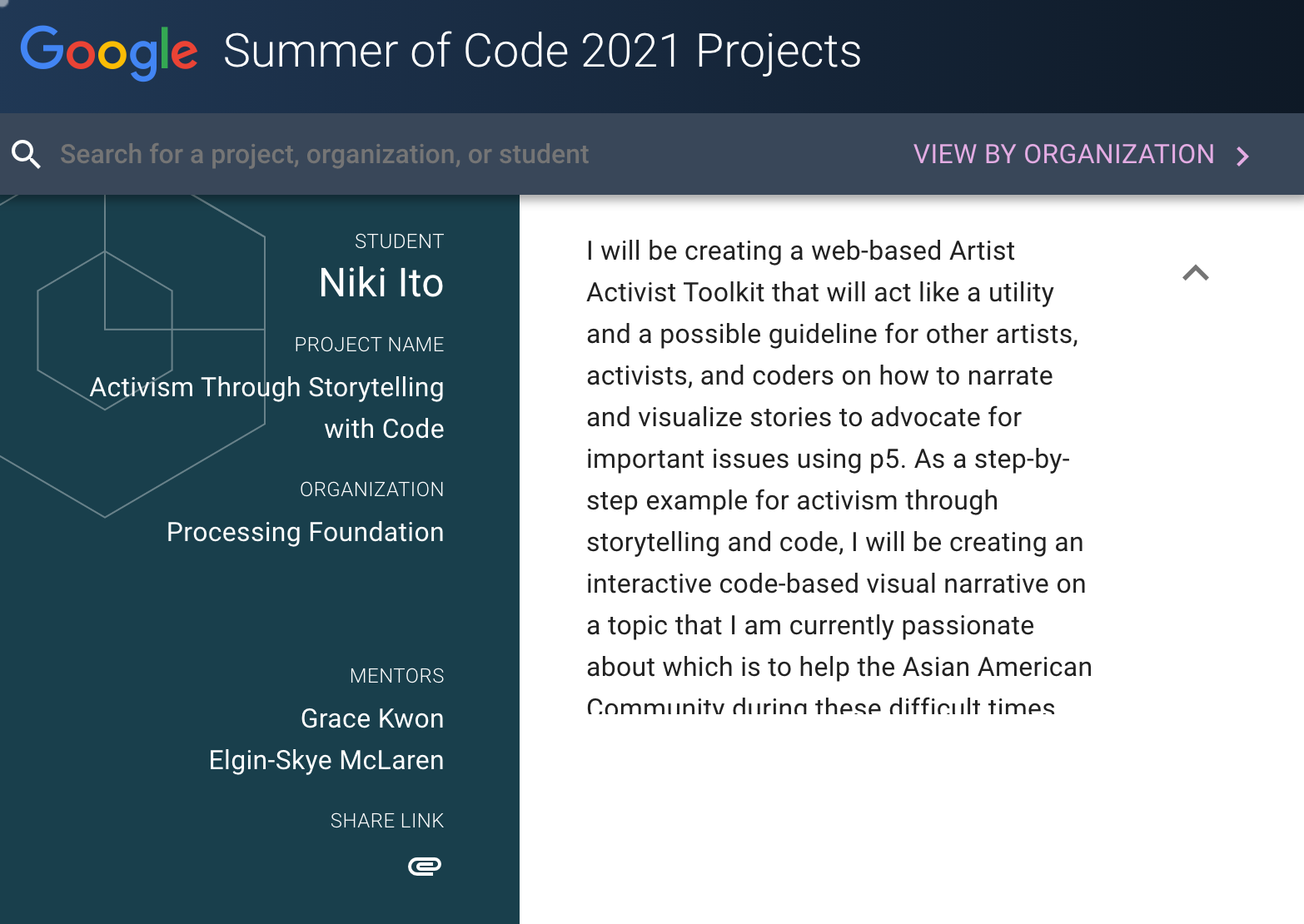- Struggle: Lack of understanding of the Asian
American
experience.
I realized that even though I have seen documentaries and
read books about Asian
Americans, knowing of their experiences and truly understanding them were two different
things. Even though it is obvious that I would not know what it is like to be Chinese
American for example, I sometimes had forgotten how different our lives and perspectives
were. Especially as a Japanese international student who is just visiting the U.S, it was not
until I actively immersed myself in Asian American communities that I realized just how
much I was different. Not only is "Asian American" a very large group of people but I
also found it tricky to curate my project to include groups of people that I had yet to
understand. Although it would be a nice challenge to try and include various cultural
groups of Asian Americans, I felt that I was limited in time and connections.
Solution: Reevaluating my position and capabilities.
Realizing my level of understanding and the position that I
am in led me to be more
cautious about what specific group of people I would be representing in my project. At
first, I discussed my project with as many people as I could but it wasn’t until I
contacted a close friend of mine and artist Miwa Neishi, that I was able to finally start molding
my project. Miwa is also Japanese and we previously had conversations about art and purpose. With her support, I ended up building my project from a closer and more familiar space. This
led to my project focusing more on the Japanese diaspora in the U.S. In this way, I was
able to better understand and curate my project.
- Struggle: Contacting and scheduling conflicts
with potential
project subjects.
My first plan was to interview an old Chinese-owned store in
Chinatown. I had contacted them before my project had started but received no answers.
After some waiting, I realized that they must be very busy and I should move on to
another plan. Since this project has a timeline, it was important to have flexibility so
that I could start coding and building the project. After changing my plan from
interviewing one subject/entity to recording conversations between two people, I
continued to have issues when planning to get in touch with people. Some people were
interested but did not have time and others would not stay in touch.
Solution: Finding the right person and sticking with
them.
It was most helpful that through Miwa, I met Japanese American photographer HATSUE who was not only
interested in my project but was able to make time and contribute to my project. Since
my plan was always in the process of molding into something better, HATSUE had a
significant role in shaping my project into what it is today. I met her through this
project and now we have a great lasting friendship.
- Struggle: Finding a way to share intimate and
authentic
narratives.
To advocate against anti-Asian sentiments, I wanted to focus
on intimate and authentic ways I can share narratives. I wanted to avoid boxing in my
subjects to serve my own purpose. In other words, I did not want to project my own
expectations on them. Especially since I am not a specialist in interviews, activism, or
racism, I thought that I should not be the one to ask specific questions.
Solution: Documenting conversations between two
people.
This allowed me to collect narratives that are more natural
and free-flowing. It was also interesting to see how different a conversation could feel
depending on who people were paired with. I felt that in this way, the conversations
were shaped more by the things they usually think about rather than what I made them
think about.
